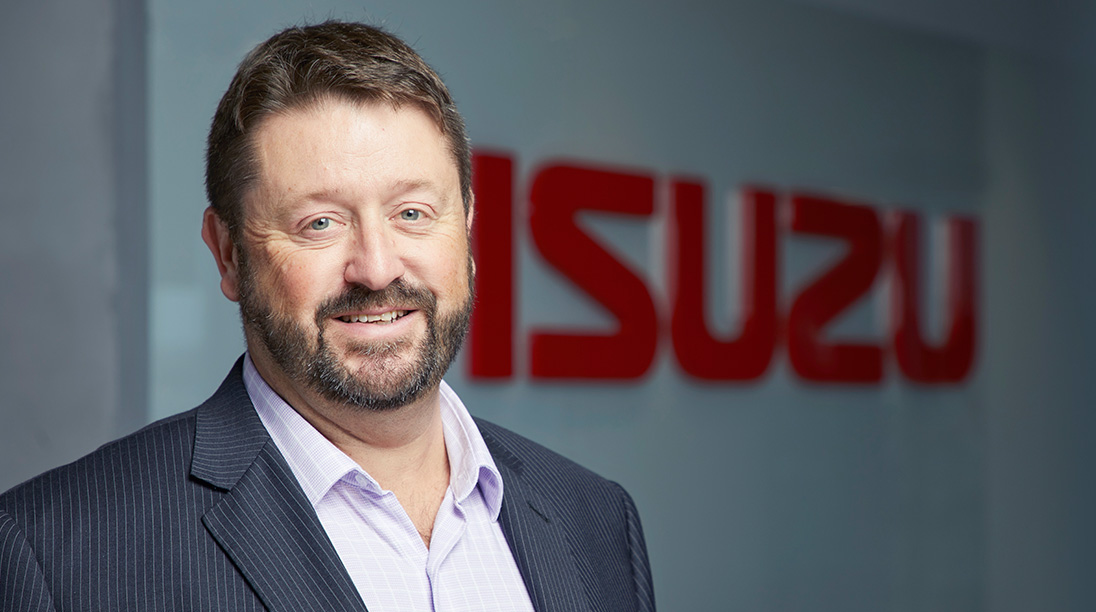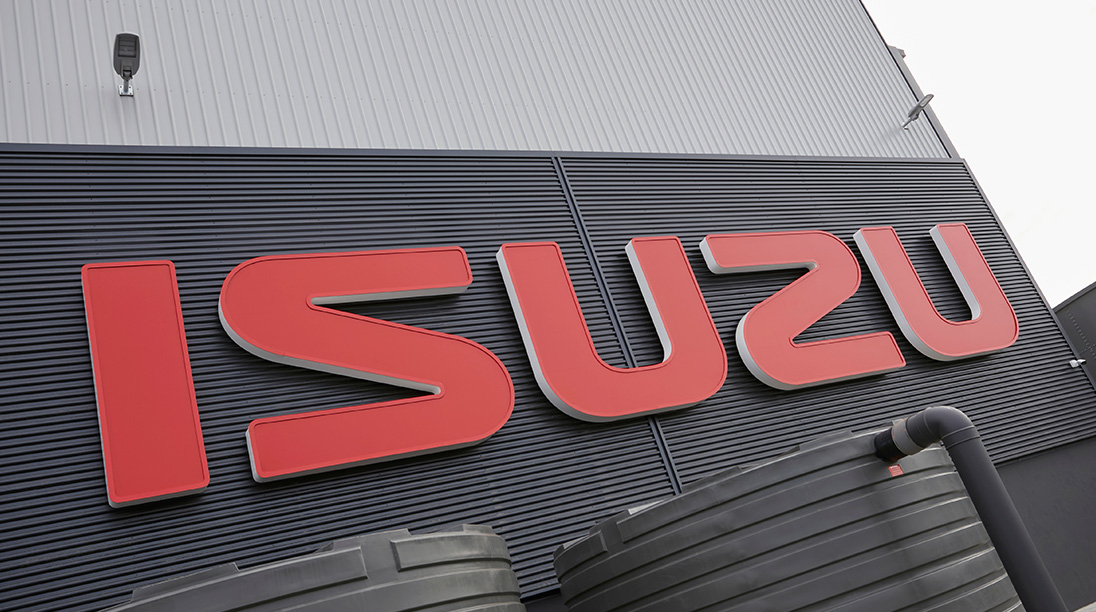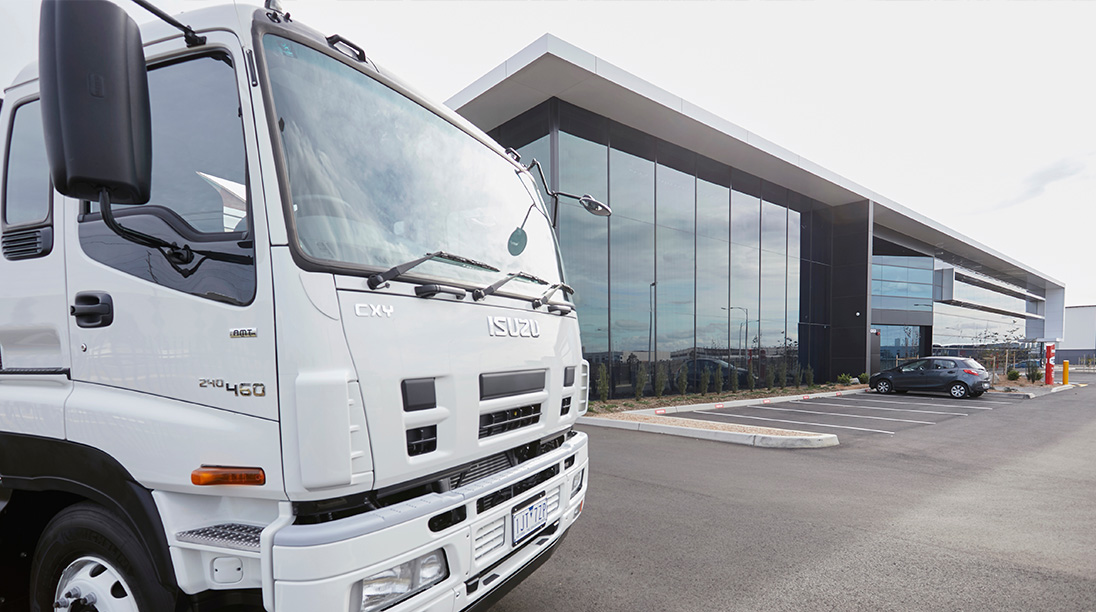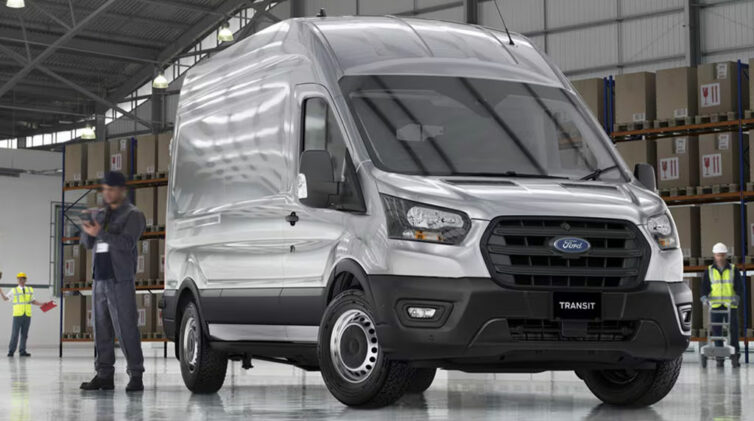In 2018, Isuzu Australia Limited notched up 30 consecutive years of being at the top of the Australian truck market.
In doing so, it has not only set a business achievement benchmark for the industry, the company’s director and chief operating officer Andrew Harbison believes it is a performance that may never be beaten.
“We’re very proud of 30 years and it’s certainly an achievement in the Australian truck market and the Australian automotive market,” he told GoAutoNews Premium.
“It hasn’t been achieved before and probably won’t be again given how competitive the market is in Australia.”
Isuzu trucks – not to be confused with Isuzu Ute, which handles the D-Max pick-up and MU-X SUV – currently commands a 22.4 per cent share of the heavy commercial vehicle market, well ahead of its nearest rival Hino which has a 14.5 per cent share.

Isuzu Australia director and chief operating officer Andrew Harbison
Last year, Isuzu racked up 10,027 new registrations – up 12.7 per cent compared to 2017 and an all-time-high result, surpassing the previous 9223-unit record set in 2008. Hino was next best last year on 5646 units.
Mr Harbison said the company put a lot of effort into its leadership position.
“In a lot of ways that drives our philosophy,” he said.
“Not only do we want to be the market leaders but, more than just selling more trucks than our competitors, it’s about operating as a market-leading organisation with honesty and integrity to the product and other factors. Leadership defines who we are.”
He said the four pillars were:
- Being customer focused. “We have a pretty simple measure that we have tried to adopt across everything that we do. If you can’t measure the impact on the customer or on the person supporting the customer then why are we doing what we are doing? Customer focus is critical. Our product has been instrumental to the success.”
- Product. “The Japanese product has always been very reliable and Isuzu has pushed very hard to maintain this. We are in a good position with our parent company in that we spend a lot of time with the R&D and engineering teams to ensure the product is the best for our market in Australia. It has to be fit-for-purpose for our customers.”
- The people. “We spend a lot of time making sure we have the best people in the industry. We empower these people to do their job.”
- Dealer network. “This is critical to us. The key is making sure it is a mutually beneficial arrangement. It may sound corny but we believe we are very good wholesalers and the dealers are very good retailers so we tend to try and work to not crossing those lines.”
Mr Harbison said that nearly all the Isuzu dealers were long-term partners.
“We have a long relationship with our network, we have a strong dealer council and that together has resulted in an ethos to working toward the mutual benefit between dealers and us,” he said.
“We get constant feedback from dealers that we are a very good OEM to work with because we take that approach to the business.
“The investment in the dealership has to be a long-term business decision and we work on supporting that rather than compromising it.”
Isuzu has 36 dealers nationally but many have multiple outlets. Adding in the authorised parts and service outlets, the company has 70 points in Australia.
Mr Harbison said there are no open points for sales and “so we don’t necessarily see a need to expand the sales network”.
“We are, however, constantly talking to our dealers about how we can improve customer service,” he said.
“But whatever we do, it has to be a triple win – our customers have to win, our dealers have to win and we have to win. It has to be economically viable for us to expand the dealer network.”
Isuzu has the largest number of outlets but Mr Harbison said some competitors are expanding and closing the gap.
He said the Australian truck market, which based on VFACTS figures accounted for 41,426 sales last year, is “interesting”.
“There are no more than (about) 40,000 trucks sold here each year and there’s a lot of brands – between 23 and 25 – represented so it’s a unique market and probably the most competitive in the world despite being relatively small by volume,” he said.
“It is certainly challenging. All the global manufacturers watch the Australian market because of the range of products – few markets have such diversity of brands – and geographical conditions.”
That has led to the market in Australia being adept at solving problems and creating new opportunities.
“We have a team of product planners and engineers here and we visit Japan two, three or four times a year to ensure the development of the product is heading in the right direction for us,” Mr Harbison said.
“We know there are limitations in what a global manufacturer can do to make a product for a local market so that final step in tailoring it for the Australian customer is done here.
“Two examples of that are the agitator that we developed and built here. Japan has now taken that work over from us and is now building it down line at the factory for us. This agitator is now sold into other markets.
“We also build and modify a dual-control vehicle here to suit street sweeper and waste applications and that is purely a local development. The dual control is unique to Australia, however it could become available elsewhere.”
Mr Harbison said there is always the need to look at new technology, including the move to electrification.
“We have a concept EV under development with partners SEA that we have been working on for almost two years,” he said.
“It aims to bring a solution to customers who want some form of EV technology. The Australian market is unique because of the distances travelled, so for many customers an EV may not be the answer.
“For those people, there has to be investment and development in diesel technology and the more we can improve the efficiency of diesels and the trucks then that will benefit operators as well.
“The product we are working on with SEA is getting close to the end of its development and we are pretty confident with the technology. We would like to see that in the market sooner rather than later.
“There is demand for EV products and future demand will grow. The core technology, however, is one part. We also have to ensure we can generate sufficient energy in an environmentally friendly way.
“There is something not logical in promoting an environmentally friendly product where some of the power it uses comes from brown coal. Part of the whole planning is working with customers and finding solutions to these issues.”
Isuzu Australia Ltd recently moved to a new 15,000-square-metre parts warehouse building in the western suburbs of Melbourne.
Mr Harbison said it is generating a “huge electricity capacity” from the placement of solar panels on the expansive roof.
“We know that a number of our customers in similar situations and their businesses have the perfect opportunity to create power from solar to charge their EVs,” he said.
“It’s not just about the core product.”
By Neil Dowling
















 Read More: Related articles
Read More: Related articles

